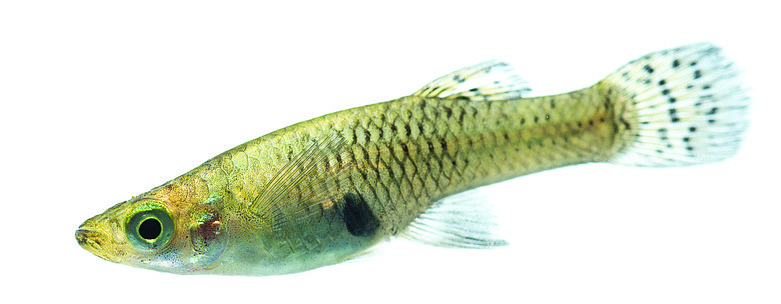- April 19, 2024
-
-
Loading

Loading

With the beginning of the rainy season less than a month away, the area mosquito population is set to boom. Sarasota County’s Mosquito Management department continues to develop its array of options for fighting the pests — including increasing its use of mosquito-eating fish.
The mosquitofish — also known as gambusia holbrooki — feeds on mosquito larvae. The 2-inch minnows, which live in the area naturally, have been used for mosquito control for a long time nationwide.
Ever since taking the post of Mosquito Management program manager last June, however, Matt Smith has sought to expand the county’s use of the fish.
Smith said the county currently traps the fish in the wild and brings them to Mosquito Management headquarters, where they are kept until dispatched where needed. This process comes with issues. By capturing the fish in the wild, staff runs the risk of moving invasive species to new areas. Additionally, the process of setting a trap and capturing a fish is labor-intensive, requiring several thousand man-hours per year.
Soon, Smith hopes, the Mosquito Management program will be able to breed the fish on its own. In addition to reducing labor expenses and avoiding invasive-species problems, in-house breeding will allow the group to keep track the impact of the fish.
“It’s hard to really tell with 100% accuracy how many are moved and getting around right now,” Smith said.
Once they’re in place, Smith said, the fish are extremely effective. The mosquitofish are already largely naturally present in lakes and streams, but can be useful tools when placed in flooded ditches or unoccupied swimming pools. As a result, the department is able to cut back on its use of pesticides to fight mosquitoes. The staff is responsible for a coverage area more than 550 square miles, so they benefit from not revisiting the same location repeatedly.
“If you can get a population established in an area, you can eventually never have to go back and treat it ever again,” Smith said. “We’re not using chemicals, and we’re also not using man-hours.”
In general, Smith wants to reduce the department’s reliance on harsh pesticides. The group has also hired an environmental biologist to help track the impact of the sprays used by the department over the past decade.
The county is still in the cost-benefit analysis stage of creating an on-site breeding program for the mosquitofish, but Smith believes increasing their presence would be a solid investment.
“The gold standard for biocontrol is the mosquitofish,” Smith said. “Our main thing, since we’re using them already, is having them in a more robust area.”
Contact David Conway at [email protected]